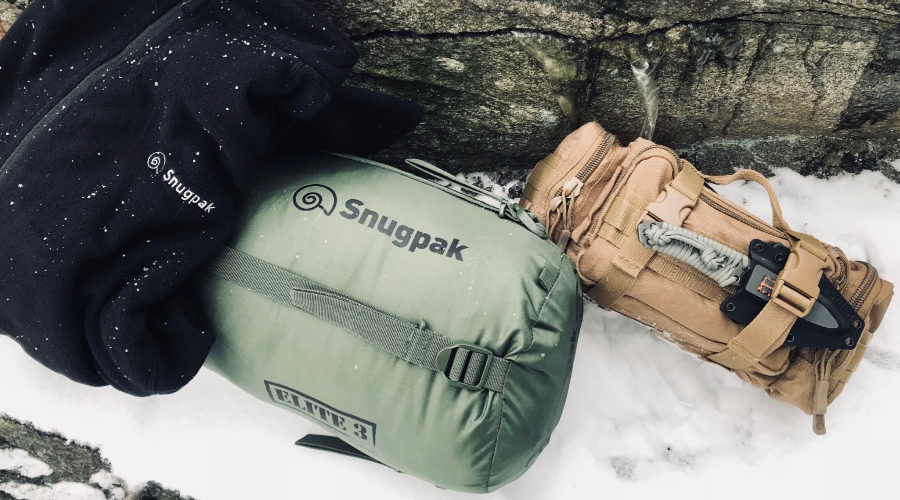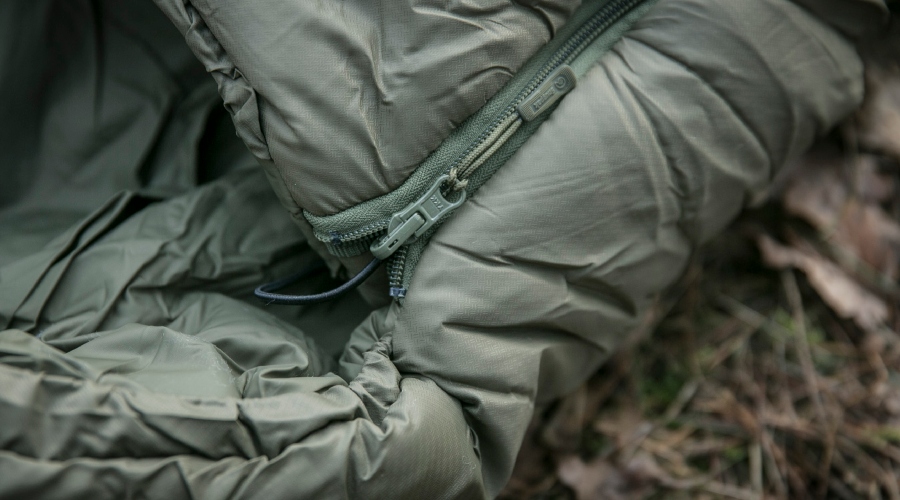What do you imagine under the word winter sleeping bag? It's the kind of sleeping bag that is specially designed for the winter season. This means that the manufacturer expected that the user would sleep in the winter sleeping bag when the mercury in the thermometer shows negative values. And they adapted the structure of the sleeping bag accordingly. It also should be mentioned that an ordinary user can get by with a three-season sleeping bag, i.e. for spring, summer, autumn, without any problems.
Winter sleeping bag characteristics
Winter sleeping bag is the most expensive and also the largest sleeping bag. You usually buy it when you go on a mountain expedition, ski mountaineering, or to do some mountain outdoor activities. As already mentioned, other users can get by with a three-season sleeping bag, where the user just needs to dress better or place a special insert inside the sleeping bag.

Sleeping bags don't generate heat
Right at the beginning, we must dispel a long-held myth. Sleeping bags do not generate heat, they insulate. So it depends on what the user will sleep in inside the sleeping bag. Better thermal comfort can be achieved, for example, by doing a few squats just before getting into the sleeping bag. Your thermogenesis will improve and you will warm the sleeping bag up better from the inside. Other tricks include, for example, placing a hot water bottle at your feet in the sleeping bag. You will feel nice and warm again.
Nevertheless, with a good sleeping bag and proper layering of clothing, you can achieve a pleasant temperature even without the above-mentioned tips.
Answer these basic questions
If you want to buy a winter sleeping bag, pause for a moment and answer few basic questions that will guide you or talk you out of the purchase.
- Who do you buy it for
- What conditions you will sleep in
- How often you will use it
- How much you want to invest
If you know the answers, we can crack on!
Sleeping bag material
Synthetics or feathers? This is the most frequent question ever. And there's no easy answer to that, because you can't go wrong either way.
Let's look at the main pros and cons
Feather advantages:
Disadvantages:
- looses insulation properties when wet
Synthetics advantages:
- provides insulation even when wet
Synthetics disadvantages::
- less efficient insulation
So now it's clear that feather is better, but only if it doesn't get wet. If we consider that the risk of getting wet during our winter trips really exists, then it is really better to go for synthetics.
Construction
It's simple. You are most likely to encounter a mummy and very rarely the classic rectangular bag. Here it's only just a matter of your personal taste.

Temperature coefficients
The temperature coefficients are specified by the EN 13537 standard. This standard tells us how we will feel inside the sleeping bag. The standard cannot be relied upon. The data are indicative only, but when buying a sleeping bag, they can tell us how good a sleeping bag we are buying.
The standard definition explains several terms:
max: the highest temperature at which the user of this sleeping bag won't sweat yet or feel hot
comfort: this, on the contrary, is the lowest temperature at which the owner of the sleeping bag lying in a relaxed position (i.e. as if on his back) won't yet feel cold
limit: the lowest temperature at which the sleeping bag user lying in a slightly bent position (i.e. on his side with knees bent) doesn't yet feel cold
extreme: this is the lowest temperature at which the user's health is still not in risk of hypothermia
Here the answer is a bit more complicated. If you are taller, for example over 180 cm, then it may happen that a classic sleeping bag will not be long enough for you. You will need to choose the extended version of a sleeping bag. Therefore, when choosing, pay attention to the information on the length of the sleeping bag.
Surface materials
Sleeping bag surface material? It must be durable and withstand mechanical damage. Especially when it comes to abrasion, a sleeping bag can be quite delicate. Most often we can see nylon, polyester, which can be combined with Paratex® Steelplate, Paratex Micro and other materials.
Other parameters
Other parameters include, for example, the zippers, which you should pay close attention to when buying. Zippers must function absolutely flawlessly and mustn't bite/catch on other fabric. Some bags have internal pockets where you can store everything you need, including a flashlight.
It is also nice when a sleeping bag has a drawstring around the face, which will help you maintain thermal comfort.
Buying a winter sleeping bag is no complicated math. First, answer the basic questions which will guide you further. Above all, keep an eye on the temperature standards and, if you have the opportunity, try the sleeping bag first. Otherwise, the product parameters will help you and, of course, spend some time reading user reviews.
Did you like this article?
- Ondřej Krotil
- This explorer and a criminalistic book author was born at the foothills of Giant Mountains. His biggest hobbies include mysteries, history, criminalistics and much more. Ondřej is currently working on such cases as unsolved murders, unexplained suicides, kidnappings or mysterious disappearances. He had been cooperating with Czech and Slovak media as an investigative reporter. Ondřej would like to make good use of his knowledge in the field of literature.
To the magazine